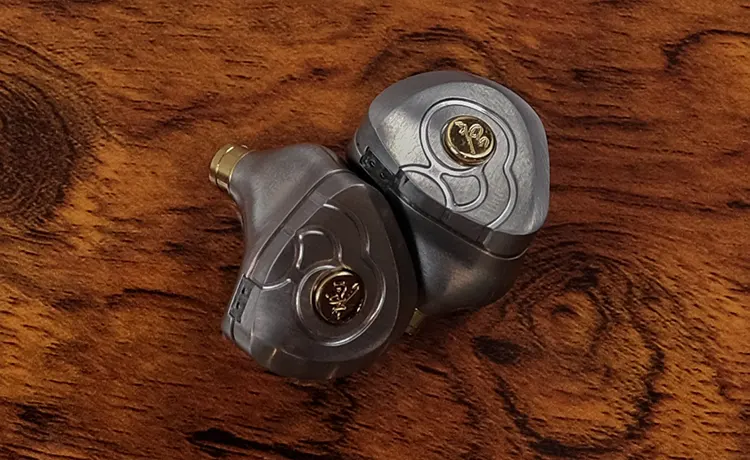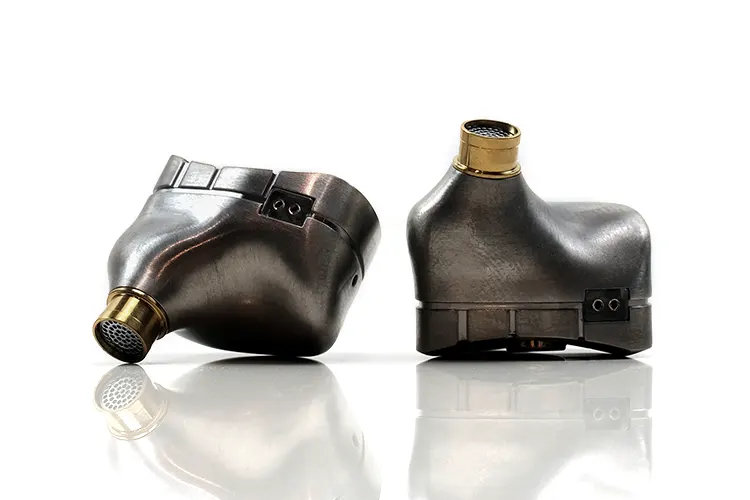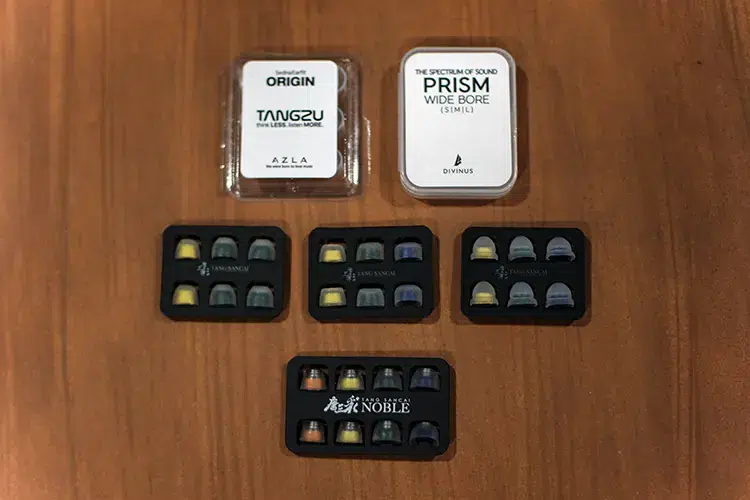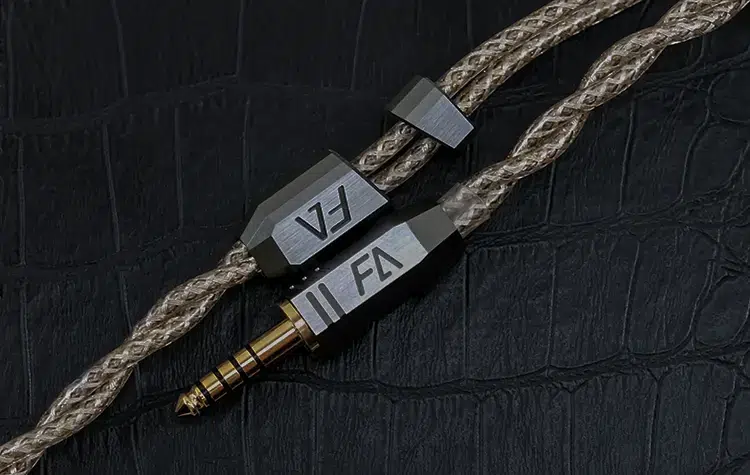Blog
TANGZU The Monkey King Review — Headfonics

Marcus reviews the TANGZU The Monkey King, a new flagship hybrid single 14mm diamond dynamic, 6 BA, and 4 EST driver universal IEM. It is currently priced at $1949.00.
Disclaimer: I received this sample in exchange for my honest opinion. Headfonics is an independent website with no affiliate links or services. I would like to thank TANGZU for their support.
You can click here to learn more about the TANGZU audio products previously reviewed on Headfonics.
This post follows our current scoring guidelines, which you can read in more detail here.
TANGZU is a hugely popular IEM brand in our region due to the multitude of price-to-performance IEMs they offer, and tight integration into aspects of anime that endear them to many Asian audiophiles.
I guess it was only a matter of time before one landed on my desk courtesy of a meeting with Steve Tong (Founder of TANGZU) at SIAS 2025 in Shenzhen.
What surprised me the most was that, unlike the majority of the moderately-priced options we have covered recently, such as the Zetian Wu Legend and the FUDU verse1, the Monkey King is a flagship beast designed to compete at the high-end, something TANGZU has never done before.
Game on, I should say. However, before you read more about how the $1949 Monkey King performs and compares in detail with the likes of the Campfire Audio Trifecta, FIR Audio’s e12, and the iconic Legend EVO from Empire Ears, I should give you a bit of a warning.
This is not a reference IEM tuned for monitoring. It is not neutral, not at all. There is a reason why I picked those competing IEMs for comparison.
The TANGZU Monkey King is an out-and-out basshead boss, delivering one of the most powerful low-end responses I have heard from an IEM of this calibre all year. If that is your preference, then read on.


Features
Let’s start with the basics. The TANGZU The Monkey King is a hybrid 11-driver universal IEM and the company’s current flagship offering.
You might see it under various labels, namely, The King Wukong; however, it’s officially called The Monkey King, as it is technically ‘part 1’ of a trilogy of high-end releases planned by TANGZU over the coming months under the Wukong theme.
Inside is a mix of dynamic, BA, and EST drivers threaded together with TANGZU’s Q-IAO intelligent crossover system.
The precise configuration consists of a huge proprietary 14mm diamond diaphragm dynamic driver for the lows, 6 BA for the mids and highs, topped off with a quad Shengyang (not Sonion) EST driver array.
The Monkey King has an impedance rating of 22Ω and an SPL of 112 dB/mW @1kHz. It’s not going to be a terribly difficult IEM to drive from most dongles and DAPs, especially with the stock cable’s default balanced connection.


Design
The Monkey King is the 3rd Titanium-molded IEM I have reviewed in the last two years, with the first two courtesy of Unique Melody in a custom format, the Maven Pro and the Maven II Crescent.
It’s not that a universal titanium shell is unique to the Monkey King; it has been done before by the likes of Shanling and Hidizs. Rather, like the UM models, this one has some exquisite craft about it. In short, the shells look gorgeous.
This is an exceptionally dense CNC-machined grade 4 titanium mold that should stand the test of time and a fair bump or two during daily use. And whilst the form factor is more to the large and slightly heavy side, it’s not so burdensome in my ears, much to my surprise.
The aesthetics avoid looking garish with a light dash of gold in the central emblem, with matching nozzles, and some tasteful grooves radiating out to the edges of the deep-set faceplate. From above, the design has a nice, pleasing flow to it.
The Monkey King’s main shell is more uniform with some gentle contouring. Not quite as precise as the custom titanium shells of the UM creations, but then again, it’s a universal offering, so it shouldn’t be.


Comfort & Isolation
The Monkey King shells are voluminous, but they fit beautifully. That may well be anecdotal feedback, given everyone’s ears are unique, but only the UM shells of this material have fitted me better. Heck, even some resin shells are not this snug.
There is a temporary temperature shock, which is the norm for metal shells. If you are in a cold climate, you would be advised to cup them in your hands for a few minutes before sticking them in your ear, as they can feel quite cold initially.
The nozzle depth from plate to tip is actually relatively deep with decent width, so, combined with a good set of tips, the pressure inside the canal is good but not overcooled, and the insertion depth is excellent.
Due to their bulk, these shells will not sit flush in your concha basin, meaning they will stick out of your ear a little and draw some attention.
Passive isolation for a hybrid monitor is outstanding. The Monkey King is vented to the rear of the main body shell, but so few universal metal shells can come even close to this level of noise suppression.


Ear Tips
The Monkey King comes with a lot of ear tip choices. You get a mix of in-house Sancai (narrow, wide, balanced) and Noble Edition hybrid stainless steel and liquid silicone, AZLA Origin wide bore silicone, and Prism wide bore tips from Divinus.
I cannot imagine you not finding a suitable tip for your ears and listening preferences. Going through them all, there are some definite changes in the Monkey King tuning from each set.
My high-level preference is for the tips with the widest bore combined with the tallest stem, which seem to produce the best response and the most immersive soundstage.
That means the AZLA Origin and the Divinus Prism tips as my 1-2 for bassheads, with the softer Prism being the slightly more comfortable of the two, but not quite as pronounced on the sub-bass from the AZLA.
The Noble tips are a little narrower on the bore but quite tall. They isolate well but are not quite as immersive. They are a little flatter on the bass and do better with vocals, meaning a set of tips that more traditional audiophiles might prefer.
The narrow-bore Sancai tips produced the flattest bass performance from the Monkey King and felt the least appropriate for the strengths of its dynamic driver. It feels like you are losing a lot of what the IEM was intended to deliver.
The other two Sancai tips sat between the Noble and the AZLA performance-wise, with their wider bores producing a more immersive sound and stronger bass with a fairly smooth top-end.


Stock Cable
The Monkey King stock cable is a fairly heavy-duty but comfortable design with a matching angular, branded titanium splitter and barrels. Visually, it’s an attractive-looking twisted design with plenty of silvery pop under a soft translucent PVC jacket.
The geometry and wire choices inside are quite complex, with a 148-core Furukawa silver-plated copper alloy, silver and gold plating, silver-plated palladium, single crystal silver and single crystal copper with silver plating, and silver-plated copper inside.
The total length is 1.2m, and it handles quite nicely with low levels of memory retention and microphonics. It comes terminated with a 4.4mm plug and 0.78mm 2-pin connectors by default.


Packaging & Accessories
The Monkey King hits my top 3 IEM unboxing experiences of all time. The other two are the articulated Vision Ears Elysium MK1 box and the beautifully themed Nostalgia Audio Tesseract package.
I would argue that the Monkey King unboxing experience might top those two, just in the very obvious level of investment TANGZU has put into it.
This is a big box with many layers, starting with the striking outer packaging sleeve, which reminds me of a premium purchase from the likes of a Tamashii Nations store. It’s bold, striking, and busy looking, and just well, a lot of fun to look at.
Inside, you get the real start of the show, the stabilized wood display case with a large gold badge finish at the front. It’s a very impressive display case and one worth having around the house on a coffee table as a discussion topic among friends.
Inside, you get multiple layers for the ear shells, the multitude of tips, and a stylized version of the TANGZU carrying case. Surprisingly, no warranty or serial number cards, which might have added a touch of exclusivity to the package, but that’s nitpicking.
Overall, this is a world-class presentation and something rivals should pay close attention to, given this is not a summit-fi price point for IEMs.
Click on page 2 below for my sound impressions and recommended pairings.
Click on page 3 below for my selected comparisons.













